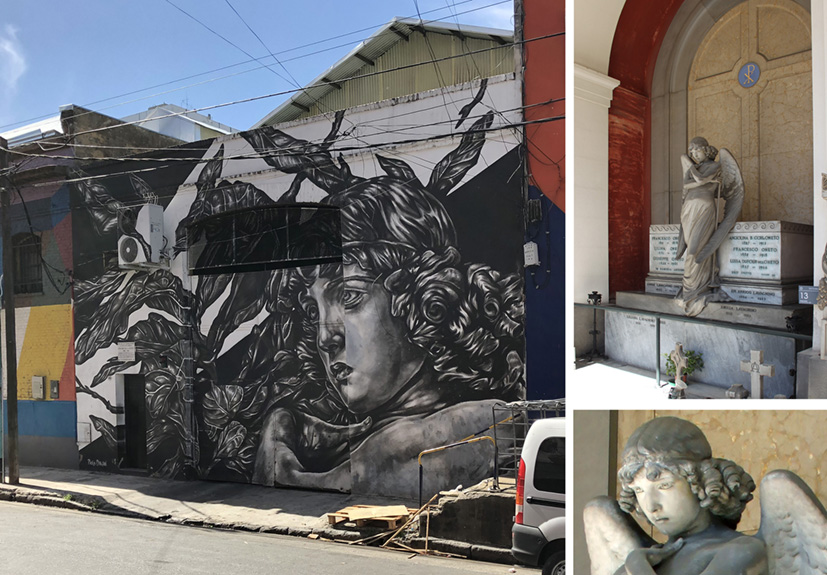
Talking walls and figurative polyfony in Buenos Aires
Abstract
In Buenos Aires, many buildings powerfully assert their individual identity by showing façades with vividly decorations, almost like an antidote to the monotony of urban layout, based on the repetition ad libitum, in the vast expanse of the city, of the urban grid, composed of square blocks.
Some of these facades, in particular those ascribable to the Art Nouveau style, show a drawing, already belonging to the original imprinting of the building, with an imaginative plant composition.
Instead, in most cases, the decoration of the facade intervenes at a time subsequent and seems juxtaposed, as a dialectical element, with the architecture of the fronts, often canonically entrusted to the use of classical orders.
The language adopted by these figurations can be traced back to two distinct iconographic traditions: the muralist one, widespread throughout Latin America, and that of the fileteado porteño, a decorative style typical from Buenos Aires, recognized since 2015 as Intangible Heritage of Humanity.
In its double declination – with own peculiar techniques, graphic codes and semantic values – the figurative decoration of the building fronts has become so closely part of the urban landscape of Buenos Aires as to have been adopted as main instrument for the regeneration of some urban parts, as, for example, the case of redesigning the façades of calle Lanín, collectively drawn by the inhabitants under the coordination of the artist Marino Santa María, and the transformation of calle Jean Jaurès into Paseo del Fileteado, by the most famous fileteadores masters.
Keywords
Full Text:
PDFRefbacks
- There are currently no refbacks.
Copyright (c) 2020 Maria Pompeiana Iarossi
DISEGNARECON
ISSN 1828 5961
Registration at L'Aquila Law Court no 3/15 on 29th June, 2015.
Indexed in SCOPUS. Diamond Open Access. All papers are subjected to double blind peer review process by qualified reviewers.
Journal founded by Roberto Mingucci
